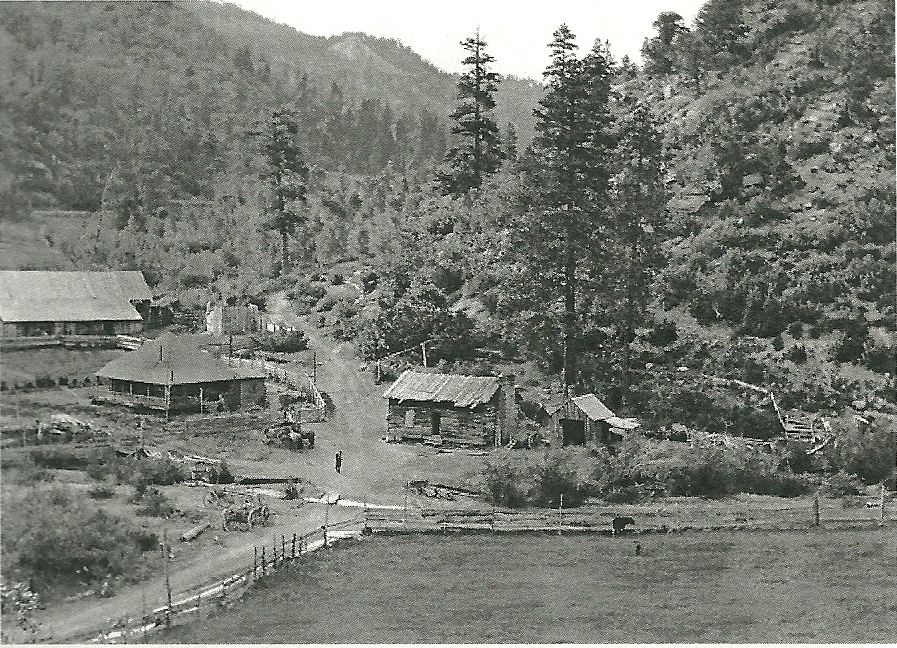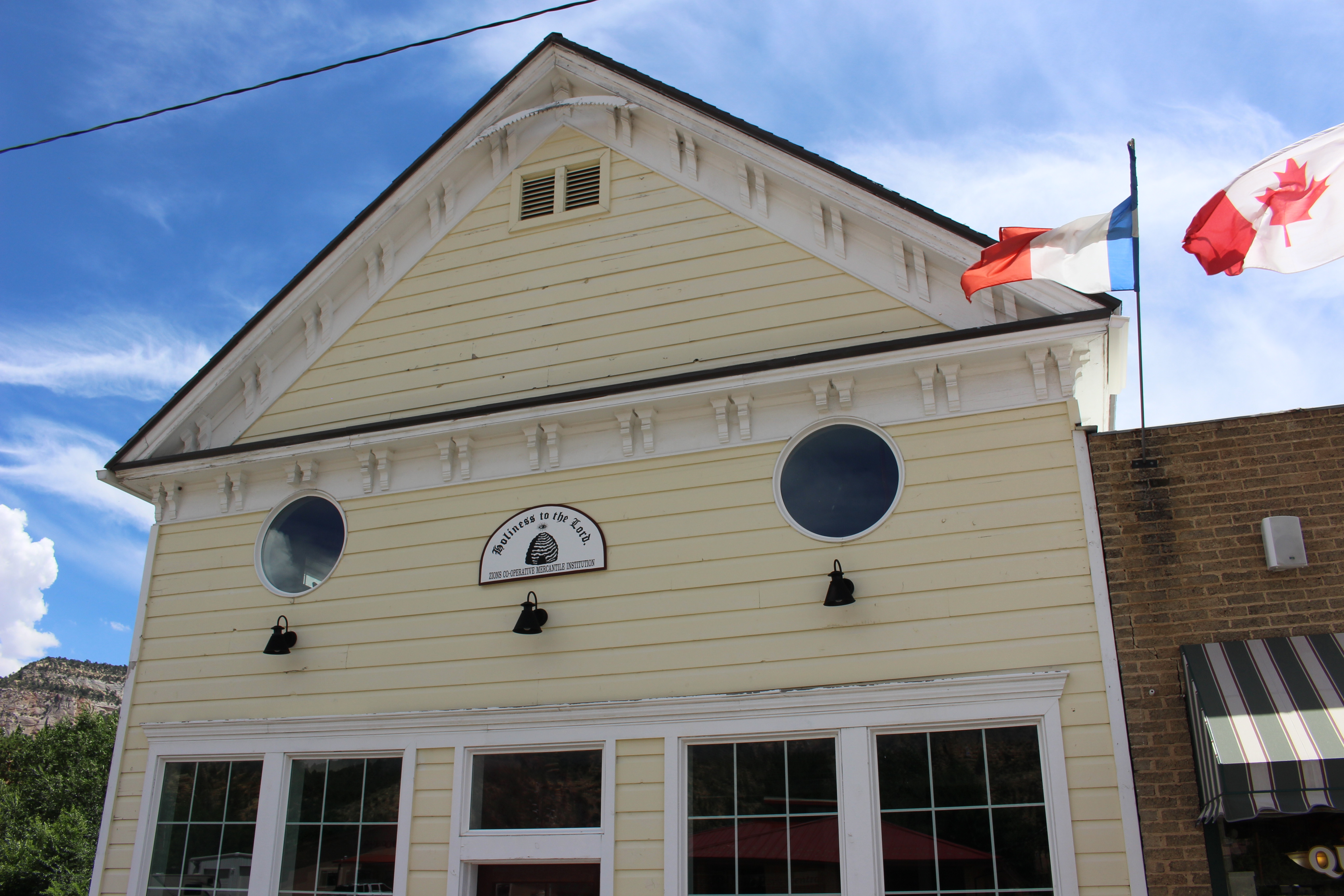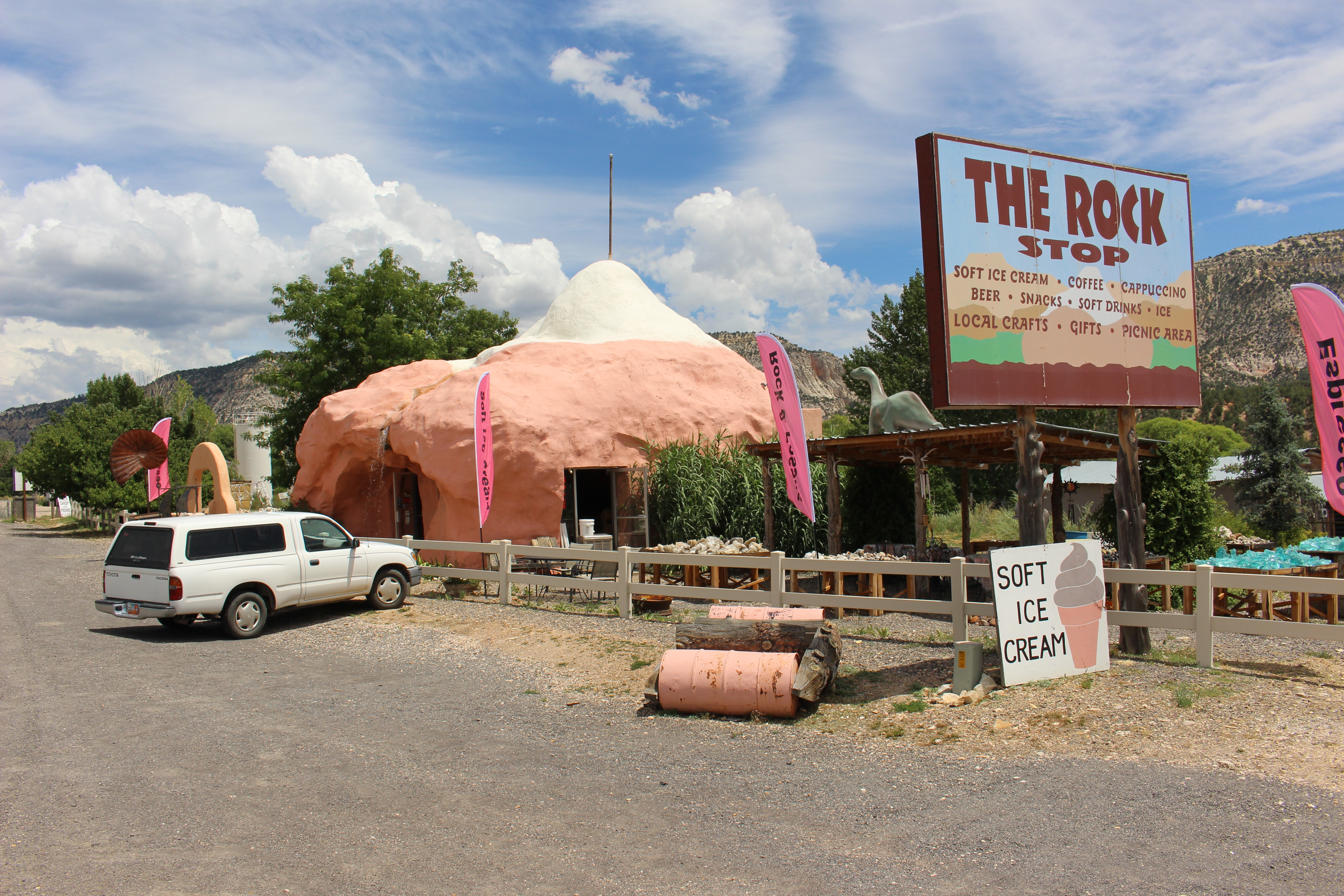
FEATURE — The saying goes that one person or group’s utopia is another’s dystopia, and such was the case with the settlement of Orderville, the longest-running and most successful attempt in the early history of The Church of Jesus Christ of Latter-day Saints to live the United Order.

The United Order was an attempt at a utopia – basically divinely-appointed communism before communism as the world now knows it even existed. This notion of communal living, in which all things in a community are held in common with all provided for and “no rich or poor among them” was advocated by Brigham Young, the second president of the church. In fact, a General Conference talk Orson Pratt gave in April 1874 admonished church members to live by this ideal as part of a way to overcome the economic depression known as the Panic of 1873. Some rejected it, others tried to live it and failed quickly, but one group had staying power – saints who named their community after the communal system they were striving to make work.
They first tried it in Mount Carmel, but there was too much dissension and resistance so just like the Nephites of the Book of Mormon, this set of settlers who were truly committed to living the Order broke off from the group and moved 2.5 miles north to found Orderville. The location proved an excellent spot to establish such a communal atmosphere because of its isolation at the time.
Settlers began arriving in Orderville in 1870 and 1871, but the United Order itself did not begin until July 14, 1875. Whatever cash and goods Order members possessed beforehand were given to the Order, so everyone would be equal. Prospective members were even asked a set of 20 questions, much like today’s temple recommend interview, to see if they were truly committed. Questions ranged from “Do you use tobacco, tea or coffee?” to “Are you in the habit of quarrelling?”
Homes were hastily constructed with wood framing in a square with a communal dining hall, which was next to the bishop’s house, known as “The Big House” because it was literally the largest among the dwellings, in the middle. Operated like a military establishment, a bugle sounded at 7 a.m., noon and 6 p.m. to call members to breakfast, lunch and dinner. Curfew was at 9 p.m.
Members of the Order later remarked that one of the things that truly made them feel like a community and built camaraderie was the fact that they always ate together. At first, the adults and children sat together during meals, but later, whole families were allowed to sit together.
Each member of the order received equal pay for their work. Adult males received $1.50 per day and boys 11 to 17 received 75 cents. Apparently, the Order didn’t feel women’s work was equal because they only received 75 cents a day. These wages went into a member’s account, which was debited whenever that member purchased goods from the Order. But at the end of the year, if one’s account was overdrawn because of illness or any other catastrophe, surpluses on other accounts made up the difference and at the start of the new year, the playing field was equal again.
The Order strove to be self-contained, trying not to even rely on imports from neighboring towns. It had its own bakery, blacksmith shop, cabinet shop, dairy, lumber mill, shoe shop and woolen factory as well as significant herds of sheep and cattle. Members grew and made nearly everything they needed, from soap to pants. They sold their surplus goods to neighboring towns for cash and built up a capital fund to buy equipment and land and even invested in enterprises outside the community.

In the mind of the current First Counselor in the church’s First Presidency, there was another reason the Order lasted as long as it did: the gratitude of its members, especially a faction who had suffered great privations on the banks of the Muddy River in Nevada.
“When those who had been called to the Muddy were released, they were in near destitution,” President Henry B. Eyring said in a talk given in the October 1989 General Conference, then First Counselor of the Presiding Bishopric. “They didn’t have much, but their poverty may have been their greatest contribution. Their having almost nothing provided a basis for future comparison that might have guaranteed gratitude: any food or clothing or housing that came to them in Orderville would be treasure compared to their privation on the Muddy mission.”
In fact, accounts of several members of the Order written later on, say that the time they lived the Order was one of the happiest times of their lives. For instance, former Order member Henry Fowler remembered, as reported in Martha Sonntag Bradley’s “A History of Kane County”:
“I have lived in Utah, Arizona, California, Idaho and in many different towns and I never was so much attached to a people, I never experienced greater joy nor had better times than during the period of time I was connected to the United Order of Orderville.”
But unfortunately, envy became part of the Order’s undoing, leading to some members’ slightly dystopian view of the organization. First of all, its isolation was eroding with the railroad and telegraph drawing closer. The fact that the economy was improving in surrounding towns augmented that envy.
“The people in Orderville were living better than they had in years, but the memory of poverty on the Muddy had faded,” Eyring said. “They now focused on what was in the next town. And so they felt old-fashioned and deprived.”

One story Eyring told that illustrated this envy is the tale of a boy who acted on his discontent over being denied a new pair of pants from the Orderville factory because his were not sufficiently worn out. In secret, he gathered the docked lambs’ tails from the spring crop, sheared the wool and stored it in sacks. When he was assigned to take a load of wool to sell in Nephi, he took the sacks of wool he’d obtained from the lambs’ tails and exchanged it for a pair of store pants. When he returned, he was all the rage when he wore those pants to the next dance.
When the president of the Order questioned him about what he had done, the boy was honest. At a meeting called specifically to address the issue, the leaders of the Order commended him for his ingenuity, but determined that the pants really belonged to the Order and confiscated them. Yet they told him that the pants would be used as a pattern and Orderville pants would be styled after them and he’d get the first pair.
What President Eyring called “The pants rebellion” did not end there. The factory was now swamped with orders for new pants but those orders were denied because the pants weren’t worn out enough, which began a rash of pants wearing out prematurely, such as when boys would sneak into the shed where the grinding wheel was housed to do a number on their pants. Eventually, the leaders of the order “gave in, sent a load of wool out to trade for cloth, and the new-style pants were produced for everyone,” Eyring said, explaining that it wasn’t the happiest of endings because Orderville residents suffered from the problem of not remembering their struggles in the Muddy Mission.
Besides envy and an improving local economy, there were other factors that led to the Order’s demise. One was that the Order’s biggest champion, Brigham Young, died in 1877 and his successors were not as encouraging. The equal wages and other factors also led to internal disunion and members of the younger generation became disenchanted, feeling they would not have equal stock in the organization. The Order tried to address the wage problem and restructure its system to pay skilled laborers more than unskilled laborers, but even Apostle Erastus Snow, who was not a huge advocate of the Order himself, said doing so was, in essence, giving into selfishness.
Another contributing factor that became a chink in the communal system’s armor was the destruction of the dining hall by flood in 1880, meaning the families of the order no longer sat together to eat.
The Edmunds Act of 1882, which made polygamy a felony, also helped signal the Order’s death knell as many of its members practiced polygamy, chief among them was Thomas Chamberlain, the order’s dynamic leader. Some members fled to escape capture and some were apprehended and served jail time, including Chamberlain.
The end came in 1885, when most of the organization’s assets were sold at auction, with former members doing their best to get their property back. Ever since, Orderville’s residents were left to fend for themselves in a capitalistic economy just like the citizens of all the neighboring towns.

Unfortunately, very little in Orderville remains to remind residents and visitors of the town’s interesting history. The biggest reminder is the Daughters of Utah Pioneers Museum, whose structure is built from stone from the schoolhouse built just after the United Order disbanded. The museum displays pictures of United Order members and their families as well as time-period clothing and tools, but few actual relics used by United Order members survive, admits museum guide Colene Brinkerhoff.
Connie Goulding, who wrote a short book about the town’s history for sale at the museum entitled “How Orderville Got its Name,” said it’s a shame there isn’t more to remind today’s residents and visitors of the town’s storied past, and that’s one of the reasons she wrote her book. She said expressly that she wrote it so her children and grandchildren could pass down those stories.
Tourists, who are absolutely vital to Orderville’s economy, pass through and just think it’s a town with a weird name without knowing the story behind it, Goulding said. Goulding, along with her sister and brother-in-law, Donna and Brad Adair, are trying to remedy that.
Ten years ago, the Adairs purchased the town’s old Zions Cooperative Mercantile Institution building, which was built just after the Order ended and had fallen into complete disrepair, along with the building next to it, a former grocery store. They turned the grocery store into the Soup Town Cafe, a charming eatery that serves soups (obviously), sandwiches and ice cream. They restored the old ZCMI building at their own expense and have turned it into a private museum (free of charge) that displays photographs of the United Order period as well as a few relics of the time period. The centerpiece is a model recreating what Orderville looked like during its heyday – row houses around a square with a common dining hall fashioned by noted artist Elbert Porter from a sketch of the United Order’s town layout. Goulding said the model, commissioned by the town in 1976 for its July 24 celebration, had gone back and forth from place to place for a while but now has found a permanent home.
The Adairs have tried to get the old ZCMI building on the National Register of Historic Places but failed because it had been “too cut up,” Goulding said, and someday hope to establish a park behind the Co-op building with historical markings explaining the Order’s history.
Visiting Orderville
Only 21 miles north of Kanab on U.S. Highway 89, Orderville’s central location makes a great base camp for visiting the area’s national parks, including Zion, Cedar Breaks, Bryce Canyon and the North Rim of the Grand Canyon.

An Orderville itinerary, as mentioned previously, should include a stop at the DUP Museum next to the elementary school, which is open Friday from 2 p.m. to 4 p.m., Saturday 11 a.m. to 2 p.m. or by appointment, and the old ZCMI building with its model of how the town looked during its United Order days. Another curiosity Goulding recommends is The Rock Stop, a gift shop that resembles a large rock complete with a waterfall at its entrance fashioned by Porter, the same artist who created the model on display at the ZCMI building.
And while there, try to imagine what life would have been like in the town when all things were held in common with neighbors.
Would that have been a utopia or a dystopia?
About the series “Days”
“Days” is a series of stories about people and places, industry and history in and surrounding the region of southwestern Utah.
“I write stories to help residents of southwestern Utah enjoy the region’s history as much as its scenery,” St. George News contributor Reuben Wadsworth said.
To keep up on Wadsworth’s adventures, “like” his author Facebook page or follow his Instagram account.
Wadsworth has also released a book compilation of many of the historical features written about Washington County as well as a second volume containing stories about other places in Southern Utah, Northern Arizona and Southern Nevada.
Read more: See all of the features in the “Days” series
Click on photo to enlarge it, then use your left-right arrow keys to cycle through the gallery.

A model of Orderville's layout during the United Order on display at the town's former ZCMI building by artist Elbert Porter. The dining hall was in the middle next to the "Big House" where the bishop lived and closely resembled a military establishment, Orderville, Utah, July 28, 2017 | Photo by Reuben Wadsworth, St. George News

Photo of a sketch of how the layout of Orderville looked while the United Order was being practiced by former member Isaac Vanwagoner Carling on display at the former ZCMI building in Orderville, Utah, July 28, 2017 | Photo by Reuben Wadsworth, St. George News

Picture of a historical photograph of United Order leader Thomas Chamberlain on display at the DUP museum in Orderville, Utah, July 28, 2017 | Photo by Reuben Wadsworth, St. George News

This historic photo shows the United Order dairy farm up Stout Canyon near Orderville, Utah, unspecified date | Photo courtesy of Connie Goulding, St. George News

This historic photo shows the United Order dairy farm up Stout Canyon near Orderville, Utah, unspecified date | Photo courtesy of Connie Goulding, St. George News

Photograph of a historic photograph on display at the former ZCMI building that shows the 'overland truckers' of the United Order, Orderville, Utah, July 28, 2017 | Photo by Reuben Wadsworth, St. George News

Display of pioneer relics at the DUP museum in Orderville, Utah, July 28, 2017 | Photo by Reuben Wadsworth, St. George News

Leather made from the United Order tannery on display at the DUP museum in Orderville, Utah, July 28, 2017 | Photo by Reuben Wadsworth, St. George News

A hat block used during the United Order on display with bonnets at the Orderville Daughters of Utah Pioneers Museum, Orderville, Utah, July 28, 2017 | Photo by Reuben Wadsworth, St. George News

A shawl worn by one of the United Order's members on display at the DUP museum in Orderville, Utah, July 28, 2017 | Photo by Reuben Wadsworth, St. George News

This historic photo shows the Zions Cooperative Mercantile Institution building erected soon after the United Order's demise in Orderville, Utah, unspecified date | Photo courtesy of Connie Goulding, St. George News

The old Zions Cooperative Mercantile Institution building erected soon after the United Order's demise. Brad and Donna Adair restored the building at their own expense, Orderville, Utah, July 28, 2017 | Photo by Reuben Wadsworth, St. George News

This historic photo shows Orderville as it appeared in 1904 with a new white church building finished in 1901 prominent at the middle right, Orderville, Utah, c. 1904 | Photo courtesy of Southern Utah University Special Collections, St. George News

The Rock Stop, a gift shop that resembles a large rock fashioned by artist Elbert Porter in Orderville, Utah, July 28, 2017 | Photo by Reuben Wadsworth, St. George News
Email: [email protected]
Twitter: @STGnews
Copyright St. George News, SaintGeorgeUtah.com LLC, 2019, all rights reserved.


Lol! They sure are.
Why is anyone who speaks the truth to you and makes you act like a little crybaby a bigot? Maybe you are the bigot? Ever think of that?
be careful, Brian has thin skin when it comes to his mormonism. Call him silly he’ll call you a bigot, because only “the bad people” dislike, distrust, or think mormonism is goofy and ridiculous. Most of the world are bigots to brother brian.